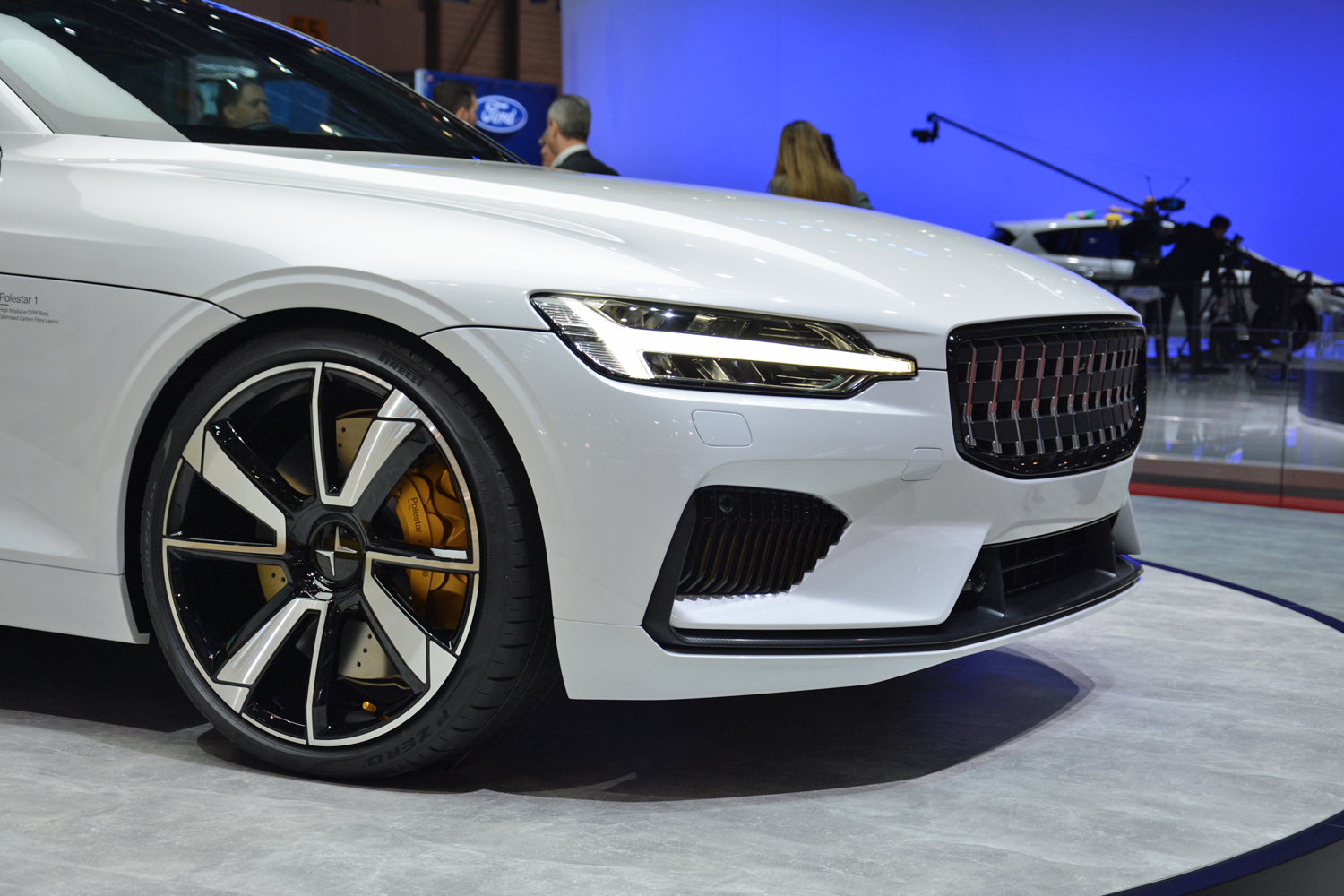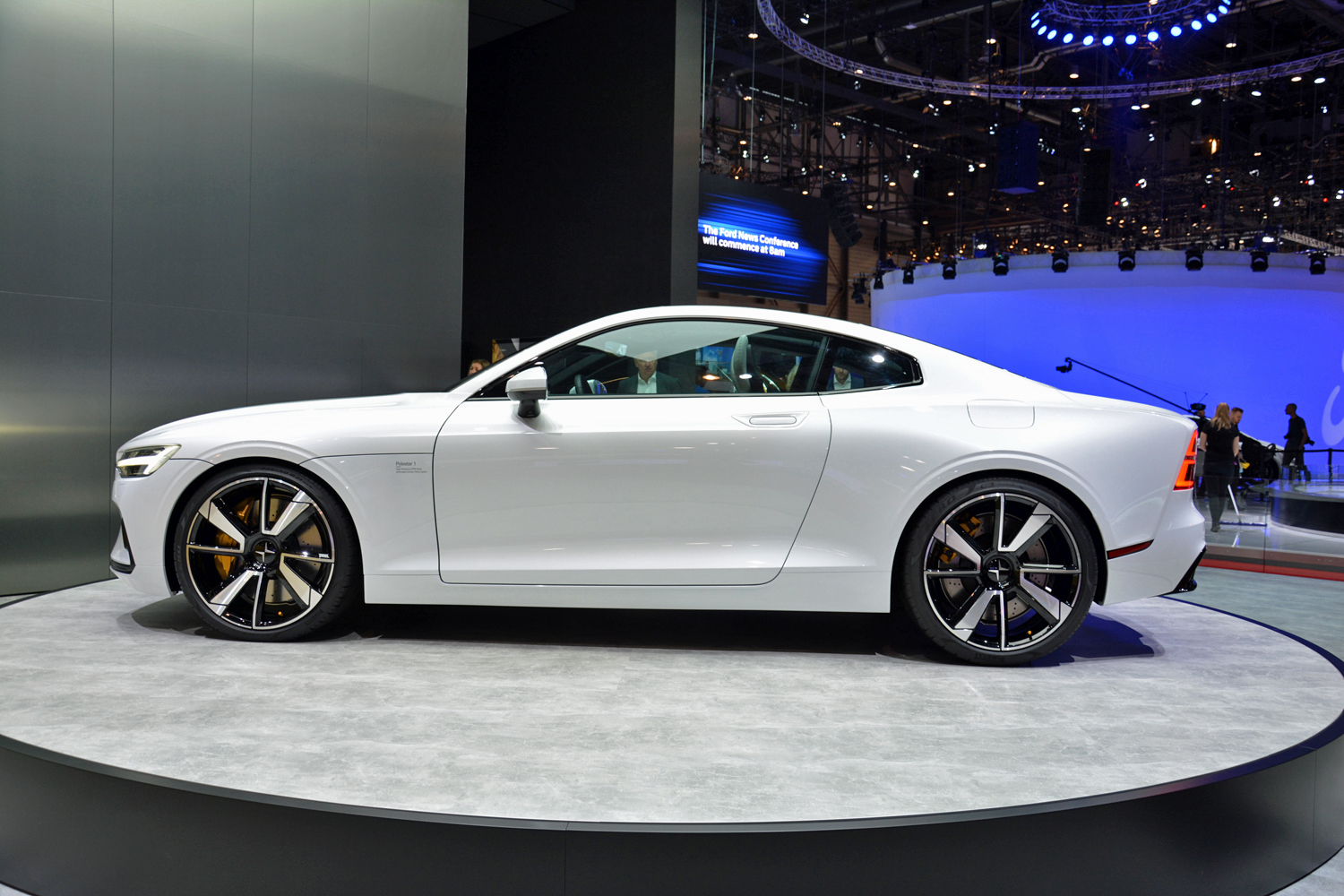Volvo has been teasing us with the prospect of a sexy, high-performance coupe since it introduced the Concept Coupe during the 2013 Frankfurt Auto Show. The design study is finally on track toward production with an interesting twist in the plot: it’s set to become Polestar’s first-ever standalone model. The first pre-production prototypes have started testing in real-world conditions.
If you liked the Concept Coupe, you’ll love the Polestar 1. All of the defining styling cues that made the concept a smash hit are accounted for, including a long hood with an upright grille, a gently sloping roof line that creates a fastback-like design, and C-shaped tail lights. Its body is made entirely out of carbon fiber in order to keep weight in check, and Polestar promises handling is enhanced by a continuously controlled electronic suspension designed by Öhlins. Making the 1 quick is significant, but Polestar wants to ensure the coupe shows a high level of dynamism when it goes around a bend. Its engineers are currently testing the responsiveness of the steering and calibrating the torque vectoring system.
“Whenever you drive Polestar 1, you should immediately feel like you are in control and that the car is ready to respond to your input, no matter what you want to do. This is a GT that needs to be easy to drive and comfortable in everyday use with its smooth and quiet hybrid drivetrain – but also ready to deliver its thrilling 600 hp and 1,000 Nm performance whenever the driver wants it,” explained Joakim Rydholm, Polestar’s chief test driver.
We’re told the Polestar 1 will be a true driver’s car, one easily capable of fending off rivals in the ultra-competitive sports car segment, but technical specifications are still vague. All we know at this point is that power comes from a 600-horsepower plug-in hybrid powertrain made up of a gasoline engine that primarily functions as a range extender, a lithium-ion battery pack, and at least two electric motors. The coupe has a range of a little under 100 miles on electric power alone. Polestar is still keeping performance numbers under wraps.
The curvaceous carbon fiber skin hides Volvo’s modular SPA platform, which also underpins the V90 Cross Country and the XC60. Using off-the-shelf components helps keep development costs in check; developing a coupe from scratch is immensely expensive, and it’s difficult to justify because the segment isn’t exactly booming right now. We speculate the gasoline engine also comes from the Volvo parts bin. It’s the same formula rivals like Mercedes-AMG and Audi Sport have used successfully for decades.
This time around, the coupe isn’t merely a concept car or a wild design study built to turn heads on the auto show circuit. The Polestar 1 is scheduled to enter production in 2019 in a brand-new facility currently under construction in Chengdu, China. Pre-production will start in early 2019. The Polestar 1 will be sold online and — much like a phone — offered on a two- or three-year subscription basis. Polestar is still keeping details on the subscription service to itself, but the U.S. retail price of the Polestar 1 will be $155,000.
The Polestar 1 will be sold initially in the United States, China, Germany, Norway, The Netherlands, and Volvo’s home country of Sweden. Each country was chosen because of high customer demand, Polestar said, and sales will gradually expand to other countries. Polestar will open “Polestar Spaces” in the launch markets in order to familiarize customers with the brand, not unlike what Tesla has done with its company-owned mall stores.
What’s next?
The Polestar 1 will sit at the very top of the company’s burgeoning lineup. The company explains the coupe will be joined by two additional models, including a smaller car named Polestar 2 that’s scheduled to debut later in 2019. Unlike the 1, the 2 will be a battery-electric model that won’t require a drop of gasoline to turn its wheels. It will be aimed squarely at the Tesla Model 3, according to Polestar. The Polestar 3 will be a larger, all-electric SUV.
Updated on December 6, 2018: Added the latest about the 1’s development process


























